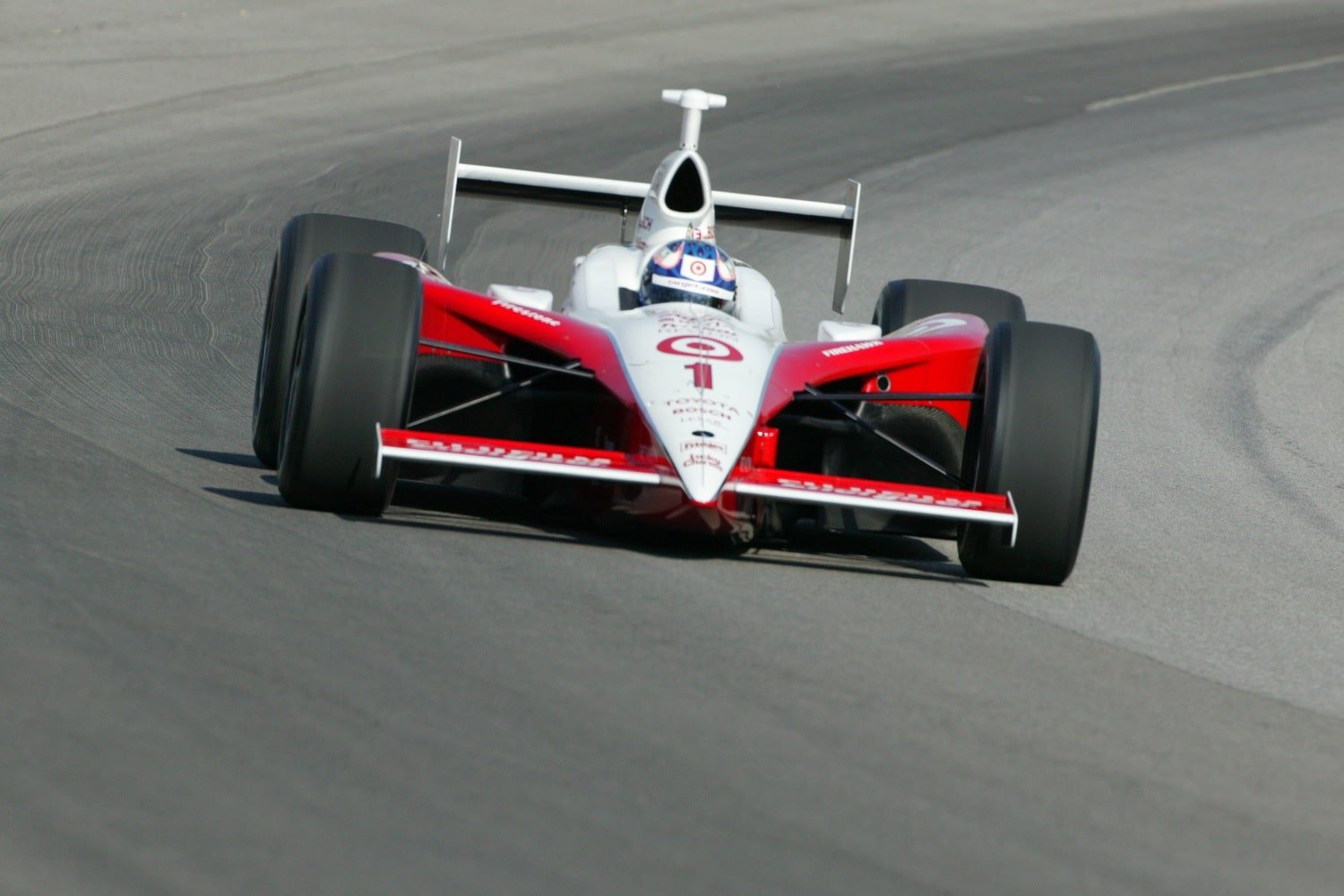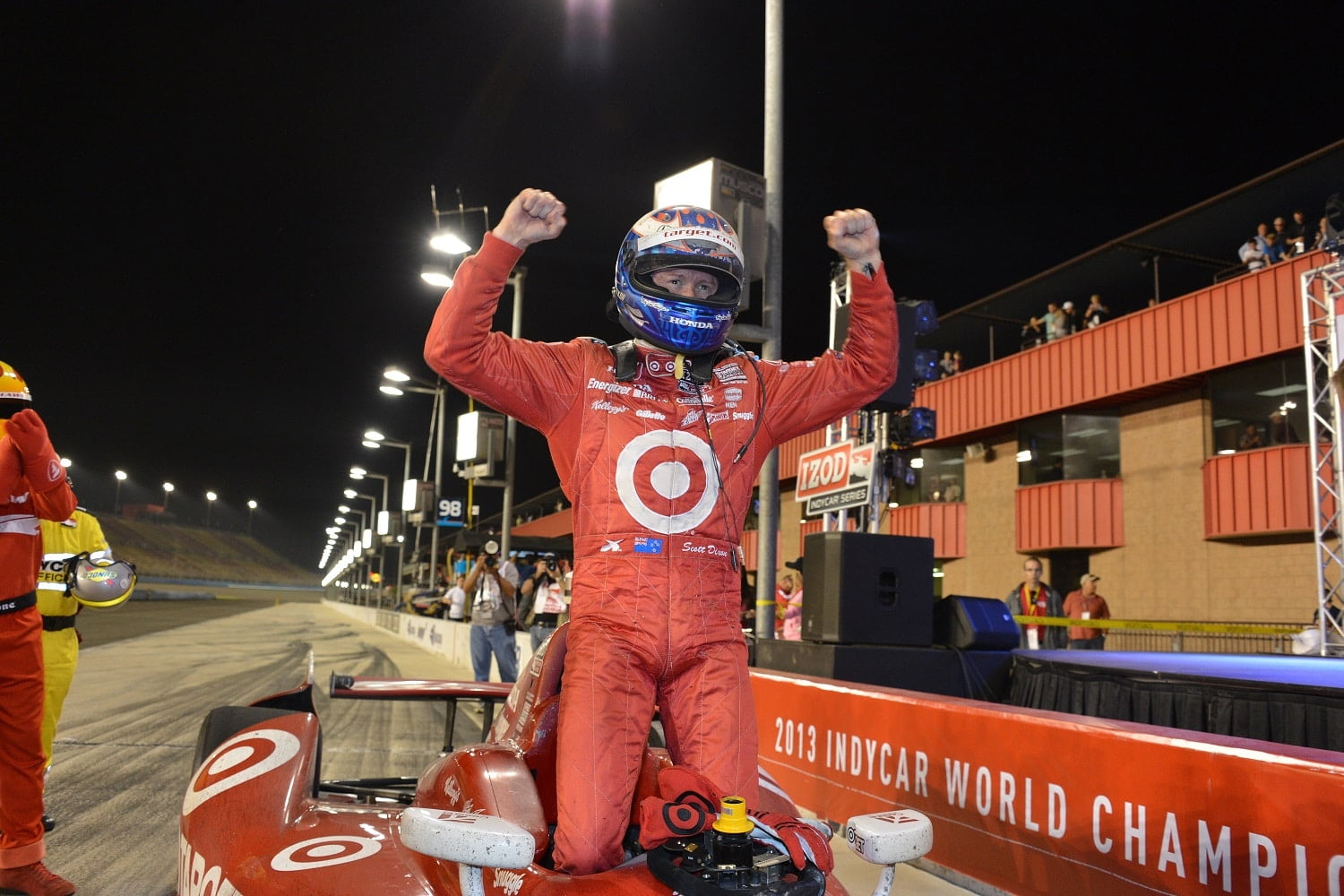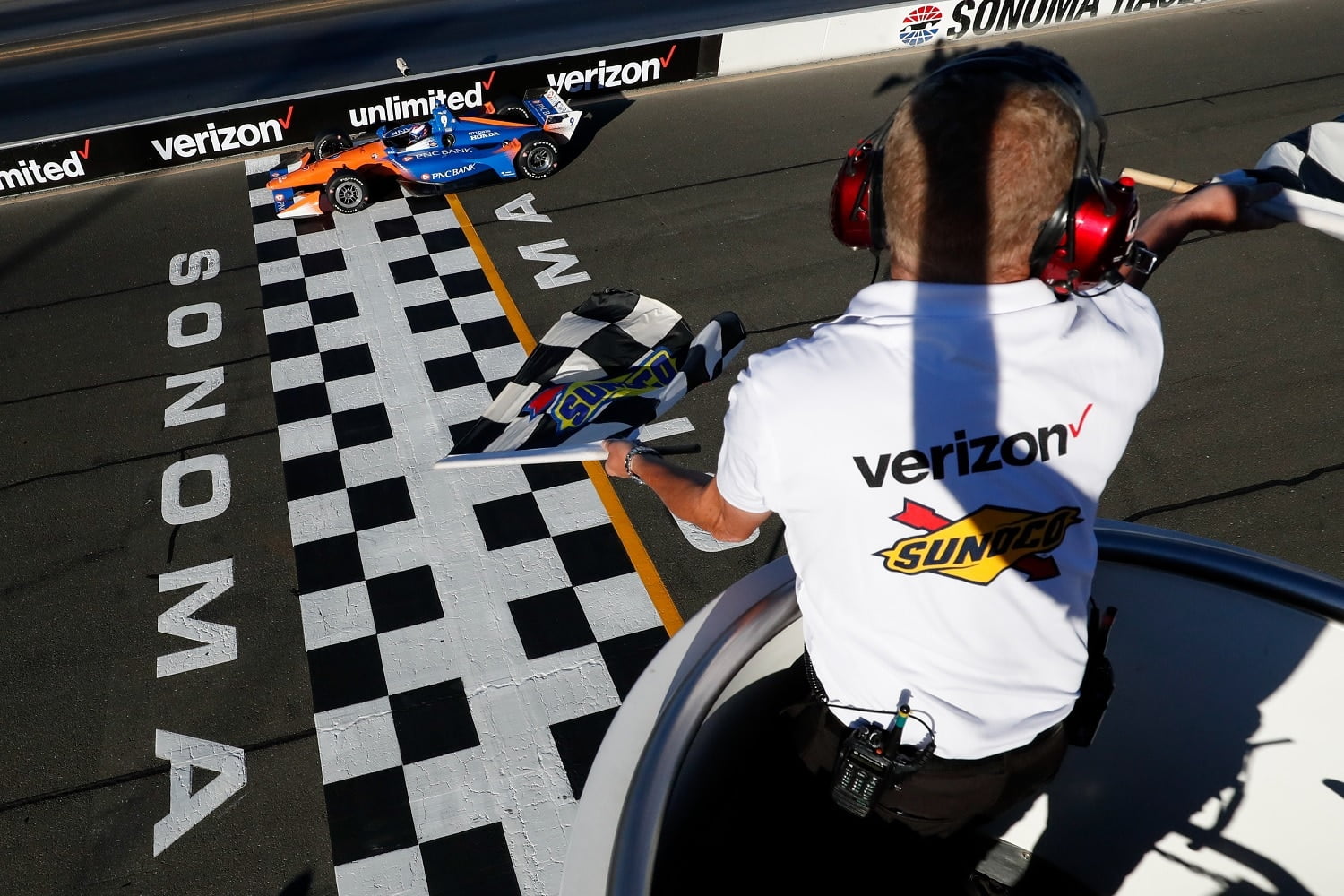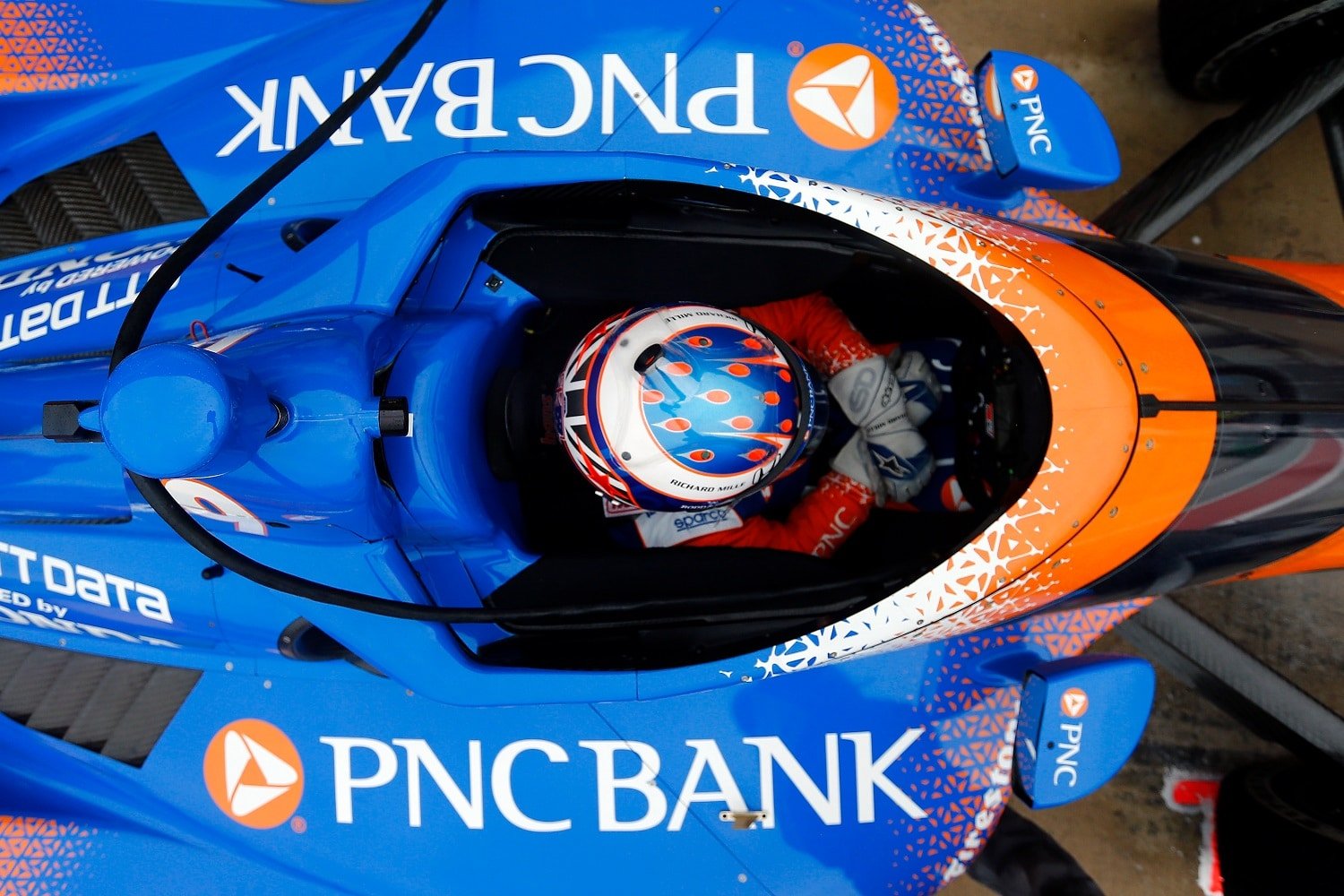Chapter Ten of the Driver Spotlight series looks at one of the greatest IndyCar drivers of all-time and one of the best ever to not compete in Formula One.
Scott Dixon will go down in the history books as a legend in motorsport. A career that has seen 19 years at the top of open-wheel racing in the United States with the five-time champion still racing and searching for a sixth title.
It all started with Formula Ford as Dixon dominated the series from 1994 to 1996. He moved the USA in 1999 after winning the Australian Drivers Championship the year before which allowed him to pursue a career without having to worry about money.
Two years in Indy Lights saw him win the championship in his second season. Immediately, he was quick and in the Chicago oval race he set a new lap record in qualifying and dominated the race. Six wins in 2000 elevated him from Indy Lights champion to a full-time CART (Champ Car) season with PacWest Racing.
Dixon outpaced his teammate and led his first race for 14 laps. Two races later and he became the youngest winner of a CART race at 20 years of age which caught the eye of some of America’s biggest motorsport names.
By 2002 though, life at PacWest had quietened down as the team struggled financially, leading to poor performances. As a result, Dixon joined Chip Ganassi, where he has remained loyal ever since.
A new era was born for American open-wheel racing in 2003 when the IndyCar Series was born. It was Dixon’s first full season with Chip Ganassi and he won the season opener at Homestead. He, led every lap in Richmond as well as winning the previous race, Dixon set the record of 343 consecutive laps led.
A hat-trick of second places to finish off the year sealed the title.

2004 and 2005 were arguably Dixon’s toughest years of his racing career. He failed to defend his title miserably and there was even talk of him losing his seat at Chip Ganassi. Nevertheless, he stayed with the team and began to refind his form.
Ganassi changed engine supplier from Toyota to Honda in 2006 as Dixon had a solid IndyCar season but was outpaced by Dan Wheldon. Dixon was the only driver to finish every race, showing his consistency and the determination to fight for every point.
A year later, Dixon was back to his best but lost the championship on the final lap after one of the greatest season-long head to heads in IndyCar history. Dario Franchitti and Dixon were both in a league of their own. Both had excellent results across the year and Dixon had three-consecutive wins at Watkins-Glen, Nashville and Mid-Ohio showing his all-round ability.
At the final race, it all came down to the last lap. Both Franchitti and Dixon were fuel saving and as they battled for the win, Dixon ran out of fuel coming off turn three in dramatic circumstances. The New Zealander lost the title to his great rival with just a few hundred metres to go.
2008 would be Dixon’s most successful season in IndyCar. A record-equalling six wins and his first Indy 500 win from pole position led to his second championship following a hard-fought battle with Helio Castroneves. On the ovals, he was the man to beat.
Franchitti returned from a nightmare season in NASCAR to become Dixon’s teammate at Chip Ganassi and the Scotsman was unbeatable at times.
Three years of Franchitti domination forced Dixon to play the bridesmaid role but he still showed he had the speed and championship mentality to push Franchitti to new heights.
The 2013 season was a classic and typical IndyCar season which saw mayhem throughout and 10 different winners along the way. When there is chaos, Dixon is often the one to emerge out on top.
Dixon was always chasing and he only took the championship lead at the penultimate round of the season before winning a third title.

2015 was another incredible year for the man from Auckland. A second Daytona 24 Hour win to start off the year and another IndyCar title.
This time it went down to the very last laps of the season.
Juan Pablo Montoya won the season-opening race at St. Petersburg and was in the lead for every race of the season. He was set to become a rare start-to-finish champion when the series arrived at Sonoma Raceway for the final race of 2015.
Dixon needed to win to stand any realistic chance. Montoya started from fifth with. Dixon ninth. Crucially, lap 39 saw Montoya run into the back of teammate Will Power in Turn 4.
That pit the Colombian back in the pack after his car was quickly repaired. Meanwhile, Dixon fought his way to the front and scored his third win at Sonoma Raceway and also led the most laps to give him a vital extra point.
Montoya raced his way back to a sixth-place finish and was battling Ryan Briscoe for fifth at the end of the race. If Montoya had gained one more position, he would have won the championship.
Dixon and Montoya finished with the same number of points but it was Dixon that stole the title on the tiebreaker. He had three wins to Montoya’s two.
Scott Dixon 5th place finish in Portland after being caught up in a crash in first lap. It’s the moment that define his Indycar championship run. Keeping on revving and fight back from adversity to keep his championship lead.
Dixon had now won championships under multiple IndyCar rules and regulations. The all-new regulations in 2003, spec Dallara-Honda IR4s in 2008, the original DW12 in 2013 and the aero kit era in 2015.
Some drivers cannot adapt to new regulations, especially when the margins are so tight but Dixon has showed his all-round capabilities and his versatility. His adapting has been shown even outside of single-seaters, collecting four Daytona 24 Hour class wins in four class eras (DP, P, GTLM and DPi.)
Universal bodywork was introduced in 2018 and Dixon somehow did it again.

Ganassi struggled to get to grips with the new bodywork but Dixon maximised results and was very consistent, finishing in the top 10 on 14 occasions (from 16) going into the season finale.
When his rivals had a bad day or suffered from some bad fortune, Dixon capitalised with five podiums from six races midway through the season. He did not retire from any event which is no mean feat in IndyCar.
At Portland, the penultimate round of the 2018 season, Dixon showed his class and it was a championship worthy drive. He lost 40 seconds on the first lap after a disastrous incident which he got caught up in.
Despite dust flying and cars everywhere, Dixon kept the engine running and emerged unscathed. Come the end of the race, he finished 5th and perhaps rescued his championship campaign with a fantastic recovery drive.
Championship challenger Alexander Rossi ran into trouble early on whilst Dixon remained calm under the intense pressure and made it look easy to finish second and win an unprecedented fifth IndyCar title.
Dixon is something of an anomaly in the racing world. To spend so long at the top in any sport is difficult but in motorsport its notoriously hard. You have to battle and beat new talent, not everything is in your hands because you have to rely on the team, in IndyCar fortune plays a big part.

To stay so loyal to Ganassi and have the staggering success that Dixon has had with them is a rarity.
44 wins in America’s top open-wheel racing series, two Indy 500 victories, has led the Kiwi to five championships won over a 15 year career. Even outside of IndyCar he has more than proven his worth. While he has never raced in F1, a test in a BMW Williams in 2004 showed him to be within pace of Ralf Schumacher, while in 2016 he collected silverware at Le Mans.
The 39-year-old is here to stay and he is not expected to win another championship. You just cannot rule him out though because he is always there and always ready to steal a race win or even a championship.
One of the best ever to not race in F1? Absolutely. He nearly got the nod ahead of Juan Pablo Montoya in the early 2000s and we all saw how mighty Montoya was at times during his F1 career.
Dixon’s record of five IndyCar championships will stand for a long time and that alone says a lot about how good he is and how special of a driver he will always be.



![Private: [ID: 71rYi-xncgM] Youtube Automatic](https://motorradio-xijqc.projectbeta.co.uk/wp-content/uploads/2024/08/private-id-71ryi-xncgm-youtube-a-1-360x203.jpg)
![Private: [ID: 1SfHxvC8Doo] Youtube Automatic](https://motorradio-xijqc.projectbeta.co.uk/wp-content/uploads/2024/07/private-id-1sfhxvc8doo-youtube-a-1.jpg)
![Private: [ID: H6XRkf6kROQ] Youtube Automatic](https://motorradio-xijqc.projectbeta.co.uk/wp-content/uploads/2024/07/private-id-h6xrkf6kroq-youtube-a-1-360x203.jpg)
![Private: [ID: Kb6w-qAmKls] Youtube Automatic](https://motorradio-xijqc.projectbeta.co.uk/wp-content/uploads/2023/12/private-id-kb6w-qamkls-youtube-a-360x203.jpg)
![Private: [ID: CcpwYw20k3k] Youtube Automatic](https://motorradio-xijqc.projectbeta.co.uk/wp-content/uploads/2024/07/private-id-ccpwyw20k3k-youtube-a-360x203.jpg)

![[ID: x1SiRC5jhW4] Youtube Automatic](https://motorradio-xijqc.projectbeta.co.uk/wp-content/uploads/2022/04/id-x1sirc5jhw4-youtube-automatic-360x203.jpg)
![[ID: lMZ8lAeLubk] Youtube Automatic](https://motorradio-xijqc.projectbeta.co.uk/wp-content/uploads/2022/04/id-lmz8laelubk-youtube-automatic-360x203.jpg)
![[ID: GAYCcnqyFo4] Youtube Automatic](https://motorradio-xijqc.projectbeta.co.uk/wp-content/uploads/2022/04/id-gayccnqyfo4-youtube-automatic-360x203.jpg)
![[ID: Gg142H296QY] Youtube Automatic](https://motorradio-xijqc.projectbeta.co.uk/wp-content/uploads/2022/04/id-gg142h296qy-youtube-automatic-360x203.jpg)

![[ID: XStdrnRLUH8] Youtube Automatic](https://motorradio-xijqc.projectbeta.co.uk/wp-content/uploads/2023/03/id-xstdrnrluh8-youtube-automatic-236x133.jpg)
![[ID: FqAtTPcdRc4] Youtube Automatic](https://motorradio-xijqc.projectbeta.co.uk/wp-content/uploads/2023/03/id-fqattpcdrc4-youtube-automatic-236x133.jpg)

![Private: [ID: PYDb727riQg] Youtube Automatic](https://motorradio-xijqc.projectbeta.co.uk/wp-content/uploads/2023/02/private-id-pydb727riqg-youtube-a-1-236x133.jpg)
